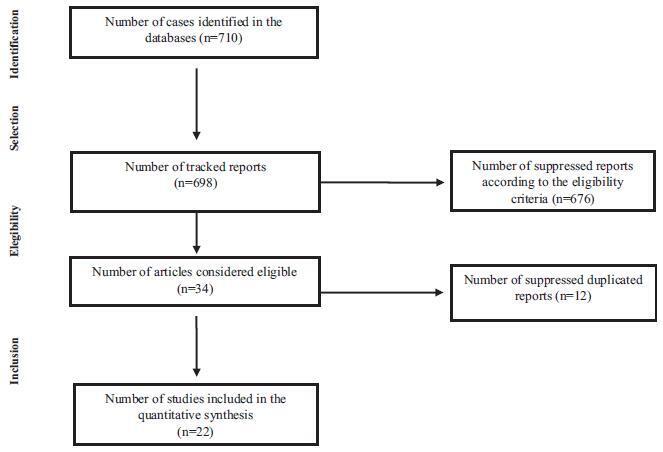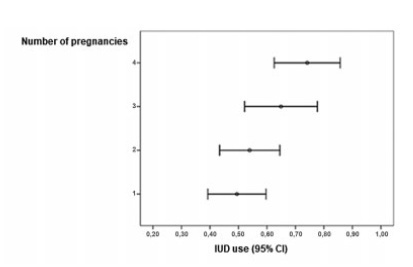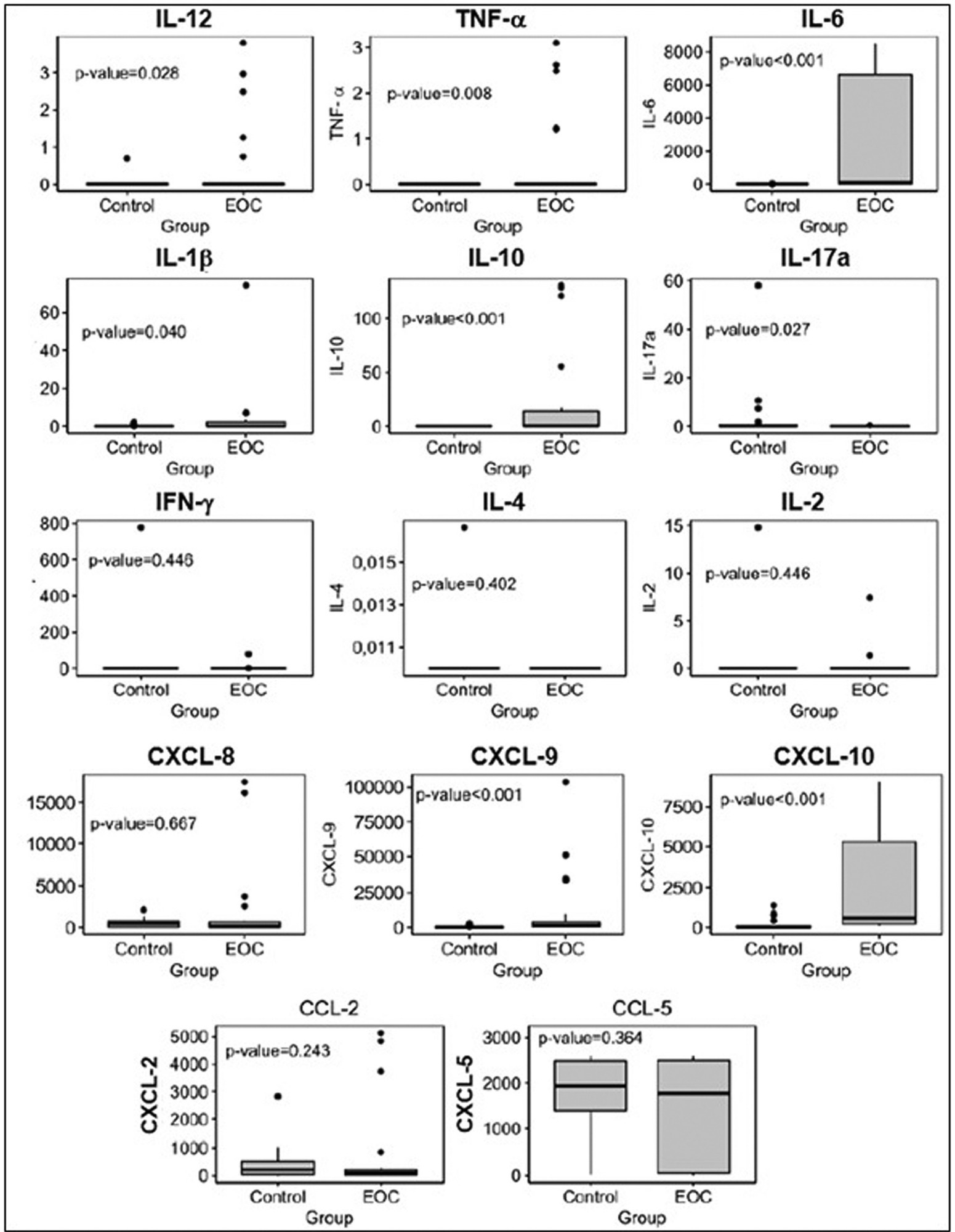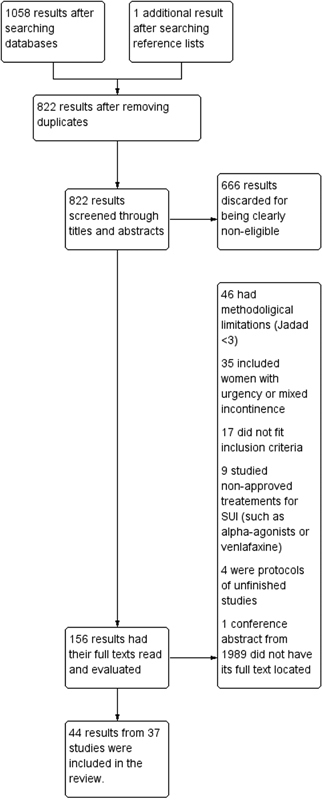-
07-11-2000
Crescimento Intrauterino Retardado Diagnosticado pelo Índice Ponderal de Rohrer e sua Relação com Morbidade e Mortalidade Neonatal Precoce
Revista Brasileira de Ginecologia e Obstetrícia. 2000;22(8):530-531
Abstract
Crescimento Intrauterino Retardado Diagnosticado pelo Índice Ponderal de Rohrer e sua Relação com Morbidade e Mortalidade Neonatal Precoce
Revista Brasileira de Ginecologia e Obstetrícia. 2000;22(8):530-531
DOI 10.1590/S0100-72032000000800013
Views91Crescimento Intrauterino Retardado Diagnosticado pelo Índice Ponderal de Rohrer e sua Relação com Morbidade e Mortalidade Neonatal Precoce. […]See morePlumX Metrics
- Citations
- Citation Indexes: 1
- Usage
- Full Text Views: 7123
- Abstract Views: 16
- Captures
- Readers: 10
-
07-11-2000
Associação entre História Clínica e Achados Urodinâmicos em Mulheres com Incontinência Urinária Transuretral
Revista Brasileira de Ginecologia e Obstetrícia. 2000;22(8):529-529
Abstract
Associação entre História Clínica e Achados Urodinâmicos em Mulheres com Incontinência Urinária Transuretral
Revista Brasileira de Ginecologia e Obstetrícia. 2000;22(8):529-529
DOI 10.1590/S0100-72032000000800011
Views75Associação entre História Clínica e Achados Urodinâmicos em Mulheres com Incontinência Urinária Transuretral […]See more -
07-11-2000
Expressão Protéica de p53 e c-myc como Marcadores no Prognóstico do Carcinoma de Colo Uterino
Revista Brasileira de Ginecologia e Obstetrícia. 2000;22(8):529-529
Abstract
Expressão Protéica de p53 e c-myc como Marcadores no Prognóstico do Carcinoma de Colo Uterino
Revista Brasileira de Ginecologia e Obstetrícia. 2000;22(8):529-529
DOI 10.1590/S0100-72032000000800010
Views63Expressão Protéica de p53 e c-myc como Marcadores no Prognóstico do Carcinoma de Colo Uterino […]See more -
Case Report07-11-2000
Pelvic Tuberculosis Simulating Ovarian Tumor
Revista Brasileira de Ginecologia e Obstetrícia. 2000;22(8):525-528
Abstract
Case ReportPelvic Tuberculosis Simulating Ovarian Tumor
Revista Brasileira de Ginecologia e Obstetrícia. 2000;22(8):525-528
DOI 10.1590/S0100-72032000000800009
Views101See morePelvic tuberculosis is an extrapulmonary form of tuberculosis with increasing incidence in the western world. Clinical and laboratory findings of this disease are often unspecific and mimic a variety of other disorders, including gynecologic malignant tumors. The authors report a case of a 53-year-old woman with pelvic tuberculosis and associated abdominal tuberculous peritonitis. Laboratory investigation included laparoscopy, CA-125 levels and tuberculin test, among others. Discussion on the clinicopathological aspects and diagnostic methods used to elucidate this case is presented.
PlumX Metrics
- Citations
- Citation Indexes: 1
- Usage
- Full Text Views: 66496
- Abstract Views: 812
- Captures
- Readers: 3
-
Original Article07-11-2000
Obstetric Management in Breech Presentation
Revista Brasileira de Ginecologia e Obstetrícia. 2000;22(8):519-523
Abstract
Original ArticleObstetric Management in Breech Presentation
Revista Brasileira de Ginecologia e Obstetrícia. 2000;22(8):519-523
DOI 10.1590/S0100-72032000000800008
Views89See morePurpose: to evaluate the results of assistance to breech deliveries. Methods: this was a descriptive study where 160 pregnant women with breech presentation and live newborns were analyzed. They were divided into two groups according to the route of delivery. Clinical data concerning labor, delivery and newborns were studied. For statistical analysis vaginal deliveries were compared with cesarean sections using mean and standard deviation estimates, Student’s t, Mann-Whitney and chi² tests. Results: the global cesarean section rate was 81.2%. The gestational age and the weight of the newborns were significantly lower in the vaginal delivery group. Prematurity and low birth weight were significantly associated with vaginal delivery. Only 14 newborns had an Apgar score below 7 at the fifth minute, almost 60% of them in the vaginal delivery group. Conclusions: this population presented a high cesarean section rate and also high perinatal morbidity, prematurity and low birth weight in the vaginal delivery group. These findings do not allow conclusions regarding the real relationships among breech presentation, route of delivery and perinatal outcomes. The control regarding gestational age and parity, besides a random decision on the route of delivery, is necessary for future conclusions.
-
Original Article07-11-2000
Fetal Malformations and Multiple Pregnancy
Revista Brasileira de Ginecologia e Obstetrícia. 2000;22(8):511-517
Abstract
Original ArticleFetal Malformations and Multiple Pregnancy
Revista Brasileira de Ginecologia e Obstetrícia. 2000;22(8):511-517
DOI 10.1590/S0100-72032000000800007
Views170See morePurpose: to demonstrate the types of fetal malformations in multiple pregnancy and their relation to chorionicity. Methods: one hundred and sixty-nine multiple pregnancies were evaluated. In all cases prenatal ultrasound examination was performed during antenatal care. Chorionicity was defined by: first trimester ultrasound evaluation (absence of lambda sign); presence of two separate placentas; different fetal sex; pathological placental examination. Results: twenty-four (14.2%) fetal malformations were observed, 22 in twin and 2 in triplet pregnancy. In the group with fetal malformations 13 were monochorionic, 4 dichorionic and in 5 the chorionicity was unknown. Some malformations were unique to twins (conjoined twins n = 5, acardiac twin n = 3) and others were nonunique to twins. The gestational age at delivery was lower in the group with fetal malformations compared to the group without fetal malformations. Conclusion: the majority of malformations occurred in the monochorionic pregnancies. In multiple pregnancies early determination of chorionicity is helpful to establish the prognosis and to plan the management of pregnancy.
PlumX Metrics
- Citations
- Citation Indexes: 2
- Usage
- Full Text Views: 83797
- Abstract Views: 974
- Captures
- Readers: 21
-
Original Article07-11-2000
Correlation between the Assessment of Fetal Well-being, Umbilical Artery pH at Birth and the Neonatal Results in High-risk Pregnancies
Revista Brasileira de Ginecologia e Obstetrícia. 2000;22(8):503-510
Abstract
Original ArticleCorrelation between the Assessment of Fetal Well-being, Umbilical Artery pH at Birth and the Neonatal Results in High-risk Pregnancies
Revista Brasileira de Ginecologia e Obstetrícia. 2000;22(8):503-510
DOI 10.1590/S0100-72032000000800006
Views153See morePurpose: to analyze the relationship between the values of pH at birth, fetal surveillance examinatios and neonatal results. Methods: one thousand, three hundred and forty-six high-risk pregnancies were evaluated at the Fetal Surveillance Unit. The assessment of fetal well-being included cardiotocography, fetal biophysical profile and amniotic fluid index. After birth, the perinatal results (gestational age at birth, birth weight, Apgar scores at 1st and 5th minutes, umbilical cord pH at birth) were collected. To study the results, the patients were divided into four groups: G1 (pH <7.05), G2 (pH between 7.05 and 7.14), G3 (pH between 7.15 and 7.19) and G4 (pH > or = 7.20). Results: the abnormal patterns of cardiotocography were associated with pH at birth inferior to 7.20 (p = 0.001). Abnormal results of the fetal biophysical profile (<=4) were related to decrease in pH values at birth (p<0.001). The adverse neonatal outcomes were associated with acidosis at birth, and they were selected to be analyzed by the logistic regression model, showing that the odds ratio of each adverse neonatal outcome increases significantly when the values of pH at birth decrease. Conclusions: significant correlation was found between the values of pH at birth and adverse neonatal results, providing the possibility to estimate the risk of neonatal complications according to the pH values at birth.
-
Original Article07-11-2000
Dilatation and Curettage in the Evaluation of Abnormal Uterine Bleeding: Histopathologic Findings and the Cost/Benefit Relation
Revista Brasileira de Ginecologia e Obstetrícia. 2000;22(8):495-502
Abstract
Original ArticleDilatation and Curettage in the Evaluation of Abnormal Uterine Bleeding: Histopathologic Findings and the Cost/Benefit Relation
Revista Brasileira de Ginecologia e Obstetrícia. 2000;22(8):495-502
DOI 10.1590/S0100-72032000000800005
Views154See morePurpose: to critically evaluate the histopathologic findings and the cost/benefit relation of dilatation and uterine curettage (D&C) in the evaluation of the abnormal uterine bleeding (AUB). Method: retrospective analysis of the histopathological findings in 542 D&C performed for AUB in the Department of Gynecology of the Faculdade de Ciências Médicas da Universidade do Estado do Rio de Janeiro (FCM-UERJ), between January 1984 and January 1994. The patients were divided into two groups: Group 1 – patients <=50 years (385 D&C) and Group 2 -- patients >50 years (157 D&C). Cases of urgency curettage were excluded from the study. All the curettages were accomplished under narcosis. The mean hospitalization lenght was three days. A histopa-thological finding of proliferative, secretory, atrophic or iatrogenic type endometrium was considered a negative pathological result. The term iatrogenic refers to the endometrium under possible influence of hormonal medication. When the histopathological finding evidenced some lesion, this was considered a positive pathological result. Results: in Group 1 there was a negative pathological result in 50.2% of the cases, positive pathological result in 39.7% of the cases, and insufficient material for diagnosis (IMD) in 10.1% of the cases. Endometrial polyp and submucosal leiomyoma were found in only 5.5% and 4.4%, respectively. Cancer was an uncommon observation in that group, endometrial adenocarcinoma (EAC) (five cases) being found in only 1.3% of the cases, in a relation of 77 D&C to one EAC. In Group 2, a negative pathological result was observed in 38.3% of the cases, positive pathological result in 38.1% of the cases and IMD in 23.6% of the cases. Endometrial polyp and submucosal leiomyoma were found only in 5.1% and 0.6%, respectively. Malignant lesions were found in 12% of the cases EAC being 9.5% (15 cases), showing a relation of one EAC to 10 D&C. Conclusions: according to the current knowledge on the etiology of AUB, this study showed that traditional diagnostic D&C has low accuracy in the evaluation of AUB and a cost/benefit relation incompatible with current medicine. Therefore, it should not be the examination of first choice. Considering, however, that EAC was found in one of each 10 D&C in women >50 years with a complaint of uterine bleeding, D&C can be indicated with more liberality in that group, if hysteroscopy with directed biopsy is not available. Nowadays, D&C does not play such a significant a role in the diagnosis of AUB as it did some years ago. However, the procedure is still indicated in some situations and it cannot be abandoned, and its indication should obey restricted criteria.
Search
Search in:
Tag Cloud
Pregnancy (252)Breast neoplasms (104)Pregnancy complications (104)Risk factors (103)Menopause (88)Ultrasonography (83)Cesarean section (78)Prenatal care (71)Endometriosis (70)Obesity (61)Infertility (57)Quality of life (55)prenatal diagnosis (51)Women's health (48)Maternal mortality (46)Postpartum period (46)Pregnant women (45)Breast (44)Prevalence (43)Uterine cervical neoplasms (43)









